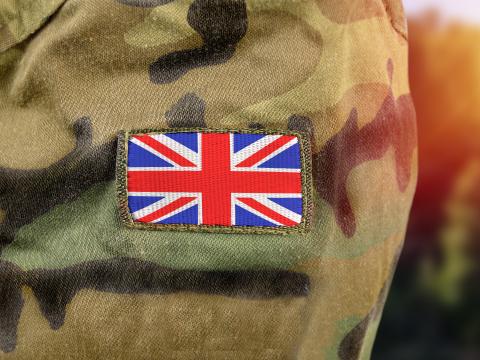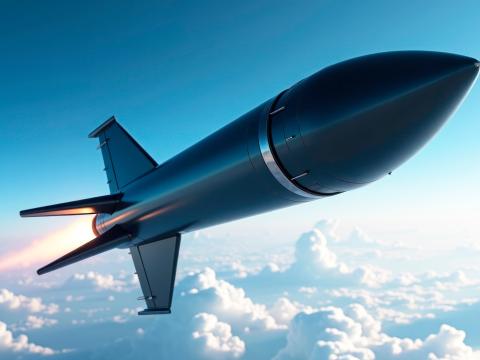Global Positioning Guidance Boosts Projectile Proficiency
Marriage of yesterday’s munitions and today’s technologies addresses mandate for cost-effective, accurate weapon systems.
The U.S. military is incorporating technologies developed for low-cost projectile and long-range missile guidance into a variety of field artillery weapons. Results of recently conducted tests demonstrate that a fast acquisition global positioning system product and a tactical-grade inertial guidance system could perform as testers expected in battlefield environments while continuing to provide required accuracy. The costs of these technologies are potentially lower than current systems.
After the Gulf War, the U.S. Army outlined several requirements to ensure domination in future conflicts. First, it identified the need to increase the stand-off distance of attacks while simultaneously being able to strike deeper within enemy territory. Second, to avoid being hit by counterfire, the Army determined that ammunition must provide an improved kill ratio, allowing troops to “shoot and scoot.” Third, reducing the quantity of munitions required to neutralize designated targets was identified as a way to decrease mission logistics. Finally, munitions developers must recognize that missions now involve mobile and stationary targets as well as heavily constructed defensive structures such as concrete reinforced bunkers.
Traditionally, speed, distance and accuracy have been key focal points in weapon systems design. Speed includes the amount of time required for soldiers to set up the equipment, fire a number of rounds and evacuate the area. In today’s Army, quickness in this process has become critical, and training significantly impacts this factor. Regardless of the advancements made in firing a gun, if the crew can operate faster, then the risk is lower, and its mission is more efficient.
Increasing the distance projectiles can travel enhances mission effectiveness. Projectiles that can be fired farther offer field commanders more options for desired missions or support fire. Historically, conflicts involved direct fire shooting at visible targets. As advancements increased the explosive power behind projectiles, line-of-sight for targets was no longer necessary.
Today, rocket-powered projectiles add even greater distance capabilities; however, improvements to the projectiles’ range pose new problems to field artillery units. These concerns include accuracy because without accuracy the crew’s speed and the target’s distance are irrelevant. Variables in wind velocity and other weather conditions pose difficult obstacles to overcome. With rocket propulsion increasing the range of a round, environmental forces create mathematical matrixes unparalleled on the battlefield. In addition, in today’s global and political environment, it is extremely important to hit only the target, reducing collateral damage that might endanger friendly troops or civilians.
Events in Kosovo and the Persian Gulf have increased public awareness of collateral damage, and global humanitarian organizations are becoming less accepting of allied and civilian casualties. At the same time, congressional pressures to decrease the cost of weapons, especially expendable rounds, are compelling military leaders to find ways to increase the efficiency and cost-effectiveness of munitions.
In the mid-1990s, global positioning system (GPS) technology could not survive the ground-to-ground mission demands of field artillery. A guidance system would have to survive the high gravitational-force (g) explosive shock of initial firing, quickly assess its location after leaving the gun barrel, and immediately begin providing guidance to the projectile while operating in a potentially high-jamming environment. For the smallest application, the system must also have more than a 20-year shelf life, cross the year 2000 and end-of-week rollover barriers, and fit into the projectile’s fuze well, which is no larger than the palm of a hand. Other considerations include the assembly, available space and design of a board. In addition, hardening of board components and the antijam capability for the GPS signal under battlefield conditions are also issues that must be addressed. Finally, after meeting all of these demands, the guidance system needs to cost significantly less than existing implementations.
Prior to September 1998, multiple launch rocket system tests in the United States and in Europe used GPS receivers supplied by Interstate Electronics Corporation (IEC), a division of L-3 Communications, Anaheim, California. The results proved that a fast acquisition GPS product and a tactical-grade inertial guidance system not only perform in the environment as expected and provide the required accuracy, but also do so at a potentially much lower cost than current guidance systems.
Company engineers recognized the technological challenges early in development. The firm’s designers determined that the basic construction of all GPS/internal measurement unit (IMU)-based guidance systems are similar regardless of whether they are developed for expensive cruise missiles or inexpensive projectiles. These systems all feature a GPS and/or inertial sensor, a navigation processor, a guidance processor and an autopilot function.
Based on GPS wideband correlation technology developed from working on the U.S. Navy’s Trident fleet ballistic missile program, the firm worked to develop a guidance system capable of providing the performance needs of a high-accuracy weapon while surviving the g’s experienced when fired from a 155-millimeter gun. Researchers began designing a guidance system that met the specified operational requirements within the size and cost constraints of the Army and Navy. Engineers used a high-antijam, GPS-based integrated guidance system that allowed the IMU selection to be a lower-performance, lower-cost product for the guidance systems on both cruise missiles and other projectiles.
To meet the size-, performance- and cost-driven goals required for even more advanced projectile and mortar applications, the firm has focused its efforts on function consolidation, electronic signal protection, ultra-deep sensor integration and processing stability. Guidance system development involves silicon-based, micro-machine technology for the inertial sensor, high levels of processor integration, and hardware function consolidation. This makes the guidance package inherently immune to the vibration and high-g shock effects of the launch. In addition, the size and power are sufficiently reduced to fit the constraints of the fuze well.
While a GPS-only-based guidance system seems to be an ideal solution for the lowest cost implementation of smart weapon guidance, the potential for signal jamming means that a GPS-only solution may never be able to guide the projectile all the way to the target. To resolve this limitation, an antijam capability is incorporated into the GPS receiver, and a miniature onboard inertial measurement unit is part of the system. As the projectile is fired, the GPS receiver, with an enhanced signal provided by the antijam subsystem, quickly acquires the visible satellite constellation after it clears the gun barrel. As a result, the projectile needs a minimal number of positional fixes to correct the miniature onboard inertial measurement unit and meet its end-game accuracy specifications. Initial laboratory tests demonstrate that the combined GPS/inertial guidance system, enhanced with a robust, low-cost antijam subsystem, consistently performs well under simulated battlefield conditions as defined by the Army.
As with all GPS receivers, however, accuracy is primarily dependent on the GPS receiver’s clock oscillator phase stability. Over time, the frequency of this oscillator changes. If a projectile is stored for long periods of time—possibly years—then pulled, loaded and shot from a gun, the guidance system must be able to determine if the clock signal has decayed. It must then compensate for any shift in clock frequency to accurately acquire and track the GPS satellites’ signal transmissions. To alleviate this problem, engineers use an advanced design correlator, which performs a time domain search of the GPS signal, and a mathematical transform, which searches through the uncertainties generated by the clock oscillator. This technological breakthrough for projectile guidance systems allows direct Y-code acquisition, a capability that enables the GPS receiver to recognize its location. This ability ensures a longer shelf life, decreases the amount of set-up time, and reduces maintenance costs to a point that is significantly lower than that of other GPS or inertial guidance systems.
As the design and development of the projectile guidance system progresses and laboratory tests are completed, upgrades are in the works for the Army’s advanced tactical air combat missile system (ATACMS). These mobile weapons were highly effective in destroying Iraq’s Republican Guard during the Gulf War. They are capable of delivering high-explosive warheads or submunitions with very high precision when used at less than 150 kilometers. As with artillery projectiles, the Army intends to increase the effective range of the missile system while reducing the cost of the guidance system. Both are essential elements of the new design.
Except for extended range accuracy, the technological challenges of adding GPS to the inertial guidance system of the ATACMS are not as difficult as those of adding a GPS/IMU-based guidance to a projectile. ATACMS weapons experience a much lower shock level at launch, have more space available for the guidance package, and are supported by a more sophisticated launch platform.
Bringing the Army and field artillery closer to their objectives, L3-IEC recently completed the first delivery of projectile GPS receivers for the U.S. Navy’s MK-45 5-inch guns. The receivers handle more than 12.5 times the Earth’s gravitational force and successfully receive GPS signals within seconds. A similar Army program requires shock levels to 15,500 g’s. The company has successfully tested some of the critical components of the receivers to over 30,000 g’s.
Jim Grace is the director of business development for military GPS Systems, Interstate Electronics Corporation.



Comments